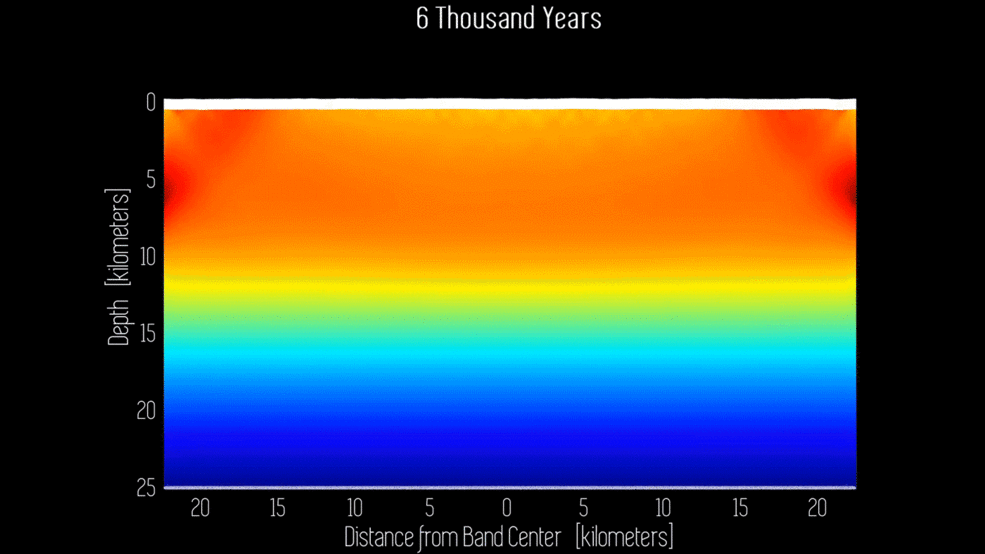
This animation shows how subsurface ocean water could be transported to the surface on Europa, one of Jupiter's moons. (NASA/JPL-Caltech/Samuel M. Howell)
Beneath the icy surface of Jupiter's moon Europa lies a massive liquid ocean — and one new animation shows how this subsurface water could move to the moon's surface.
Europa's ice shell is changed by gravitational interactions with Jupiter, according to a statement. The new animation is one of a number of simulations that show behaviors on Europa from a new study, published May 2018 in the journal Geophysical Research Letters, conducted by scientists from NASA's Jet Propulsion Laboratory in Pasadena, California.
As gravity pulls at Europa's icy shell, faults form and re-form in the ice — these faults can be seen in the animation as yellow, green and blue lines. The lighter, speckled, swirling bottom of the animation represents the upper part of Europa's ocean that meets the ice. The little white dots represent pieces of the ocean that have been frozen into the bottom of the ice. [Europa Report: Jupiter's Icy Moon Explained (Infographic)]
The researchers who made this animation refer to these little white bits as "fossil" ocean material because the pieces spend hundreds of thousands or even millions of years traveling to the moon's surface. Bits that reach the surface could be from over a million years prior, so spacecraft that study these "fossils" would reveal a picture of Europa's ancient ocean.
More From Space.com
NASA has plans to further study the moon and will send the Europa Clipper spacecraft to Europa in the early 2020s. This craft will be the first spacecraft intended to study Europa exclusively. The craft will analyze the moon's surface during a series of flybys, looking to figure out what it's made of, and it will likely be able to test and validate this animated simulation, according to the statement.
While Europa's "fossil" ocean material won't show the current state of the moon's ocean, the spacecraft will also analyze these bits. Studying these ocean bits and what they're made of could give researchers clues as to whether life could have ever existed on Europa, according to the statement.
Original article on Space.com.
